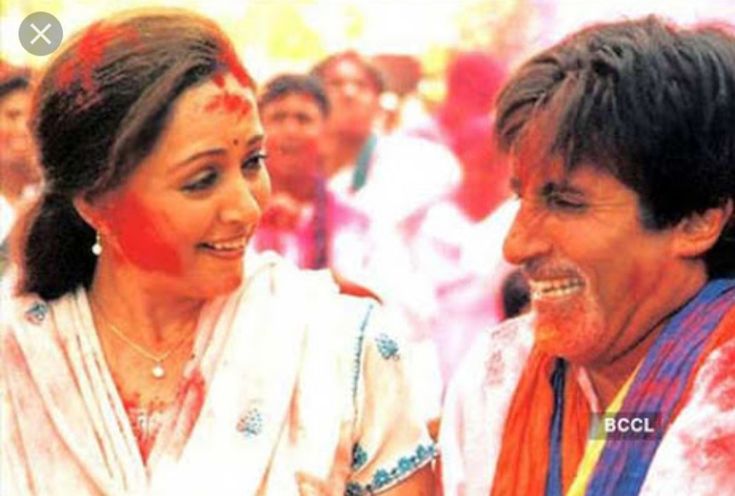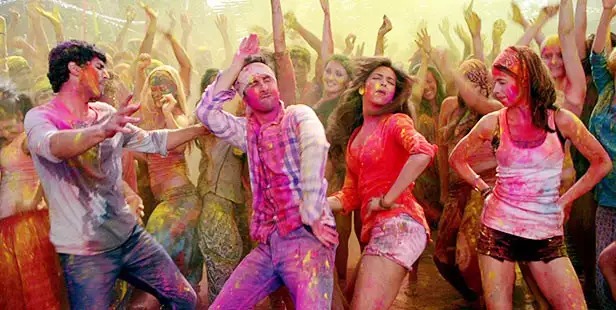By Sujata Muguda Shreyas WebMedia Solutions
25/3/2024: Holi, the vibrant festival of colors, has been a staple of Indian culture and has found its way into the heart of cinema, creating some of the most memorable and colorful scenes in film history. The festival, which marks the arrival of spring and the victory of good over evil, has been depicted in various films, showcasing the joy, unity, and the spirit of forgiveness that Holi brings.
One of the most iconic Holi scenes in Indian cinema is from the film ‘Sholay’ (1975), where the song “Holi Ke Din” captures the essence of the festival with the entire village coming together in celebration. The scene is a cinematic triumph, blending vibrant colors, joyous music, and a sense of community, setting a benchmark for Holi celebrations on screen.
Another memorable portrayal of Holi is in ‘Yeh Jawaani Hai Deewani’ (2013), where the song “Balam Pichkari” became an anthem for the modern generation. The film uses Holi as a backdrop to showcase the blossoming romance between the lead characters, played by Ranbir Kapoor and Deepika Padukone, while also symbolizing their carefree and wild spirits.
The festival of Holi also serves as a pivotal plot point in ‘Padmaavat’ (2018), where the colors of Holi starkly contrast the dark tones of the film’s narrative. The scene is not just about celebration but also foreshadows the impending doom, adding a layer of depth to the storytelling.
In ‘Mohabbatein‘ (2000), Holi brings a turning point in the film’s narrative, where the strict headmaster played by Amitabh Bachchan allows the students to celebrate the festival, indicating a change of heart. The film uses Holi to symbolize the breaking of old traditions and the acceptance of love and joy.

The depiction of Holi in ‘Baghban‘ (2003) is another touching portrayal, where the elderly couple, played by Amitabh Bachchan and Hema Malini, celebrate Holi with great enthusiasm, reminding the viewers of the importance of family and togetherness.
These films, among others, have captured the spirit of Holi in their narratives, using the festival as a canvas to portray a wide range of emotions, from joy to sorrow, love to betrayal, and tradition to modernity. The way Holi is depicted in cinema not only entertains but also resonates with the audience, reminding them of the shared cultural heritage and the universal human emotions that the festival evokes.
Holi in cinema is not just about the use of vibrant colors and festive music; it’s about the storytelling that interweaves the cultural significance of the festival with the characters’ journeys. It’s a celebration of life itself, reflecting the myriad hues of human emotions. As audiences, we not only witness the spectacle of Holi on screen but also feel a connection with the characters and their stories, making these scenes timeless and iconic.
In conclusion, Holi has been and continues to be a significant element in Indian cinema, offering filmmakers a rich palette to draw from. It allows for the creation of scenes that are visually stunning, emotionally engaging, and culturally significant. These iconic scenes and films have contributed to the way Holi is perceived and celebrated, not just in India but around the world, highlighting the festival’s universal appeal and the power of cinema to transcend cultural boundaries. Holi in cinema is a testament to the festival’s enduring legacy and its ability to bring people together, mirroring the very essence of what Holi stands for.

